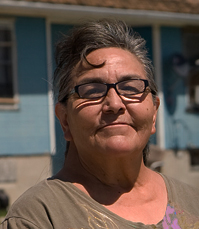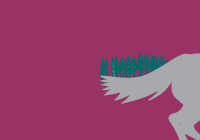|
|

 |
War chief and leader of the Oglala branch of the Teton Sioux, Red Cloud was born in present-day, north-central Nebraska near the forks of the Platte River. He was the first American Indian in the West to win a war against the United States. He was also the last.
Red Cloud’s name, which in Indian actually means “Scarlet Cloud,” refers to an unusual formation of crimson clouds that hovered over the western horizon when he was born. His father died when he was young and Red Cloud was raised by an Oglala headman Smoke, his mother’s uncle. Like other young Sioux boys he learned to fight and hunt. He was skilled at both. Red Cloud gained a reputation for bravery and cunning in raids against the Pawnee and Crow and was always personally ready to take an enemy scalp.
The Oglala remained at peace with the white settlers traveling through their territory until 1865. At that time gold was discovered in Montana and the U.S. Army began building forts across Lakota hunting grounds, establishing the Bozeman Trail. The Bozeman Trail with its connection to the Oregon Trail brought miners, immigrants, settlers and wagon trains directly through the buffalo feeding areas. Partly in retaliation for the Sand Creek Massacre of 1864 and because these intruders endangered the food resources of the Plains tribes, Red Cloud along with Man Afraid of his Horses refused to sign a non-aggression treaty permitting passage across their lands from Fort Laramie to the gold fields of Montana.
When the U.S. troops built forts along the Bozeman Trail, Red Cloud and his followers cut off food supplies and laid siege to Fort Phil Kearney for two years. Attacks were launched against troops and settlers. The native warriors employed guerilla tactics. Captain William Fetterman led a relief party in 1866 of eighty-one men. He boasted that with eighty men he could ride through the Sioux nation. He never returned.
In 1868 the government finally requested a cessation of raids and signed the Fort Laramie Treaty guaranteeing the Powder River country as well as the Black Hills to be reserved for the Lakotas forever. Native American warriors burned down every fort along the trail. They knew that forever is not a long time in U.S. government treaties with Native Americans.
Red Cloud traveled to Washington to meet with President Grant and on to New York where he made a speech. Returning to the Plains a Sioux agency was named for him in present-day South Dakota. Red Cloud spent the 1870s and 80s seeking to mediate peaceful relations between the Sioux and the United States. He was accused by some younger Oglala of selling out, while government officials accused him of secretly aiding the Sioux and Cheyenne bands that defeated General George Custer at Little Bighorn. Red Cloud’s reservation was renamed Pine Ridge.
During his later years Red Cloud lost his sight and had little to do with his people’s affairs. He died at Pine Ridge in 1909. In the course of his lifetime he had watched the West go from the heyday of the Plains horse culture to an era of the almost complete eradication of Native Americans. |
|
|















